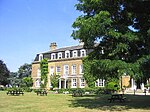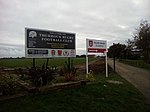St Giles & All Saints Church, Orsett
Church of England church buildings in EssexChurch of England church buildings in ThurrockGrade I listed churches in Essex

St Giles & All Saints Church is a Church of England parish church in Orsett, Essex, England, which is of medieval origin. It is a Grade I listed building.
Excerpt from the Wikipedia article St Giles & All Saints Church, Orsett (License: CC BY-SA 3.0, Authors, Images).St Giles & All Saints Church, Orsett
The Spinney, Thurrock
Geographical coordinates (GPS) Address Nearby Places Show on map
Geographical coordinates (GPS)
| Latitude | Longitude |
|---|---|
| N 51.5128 ° | E 0.3683 ° |
Address
The Spinney
RM16 3EJ Thurrock, The Bonners
England, United Kingdom
Open on Google Maps








